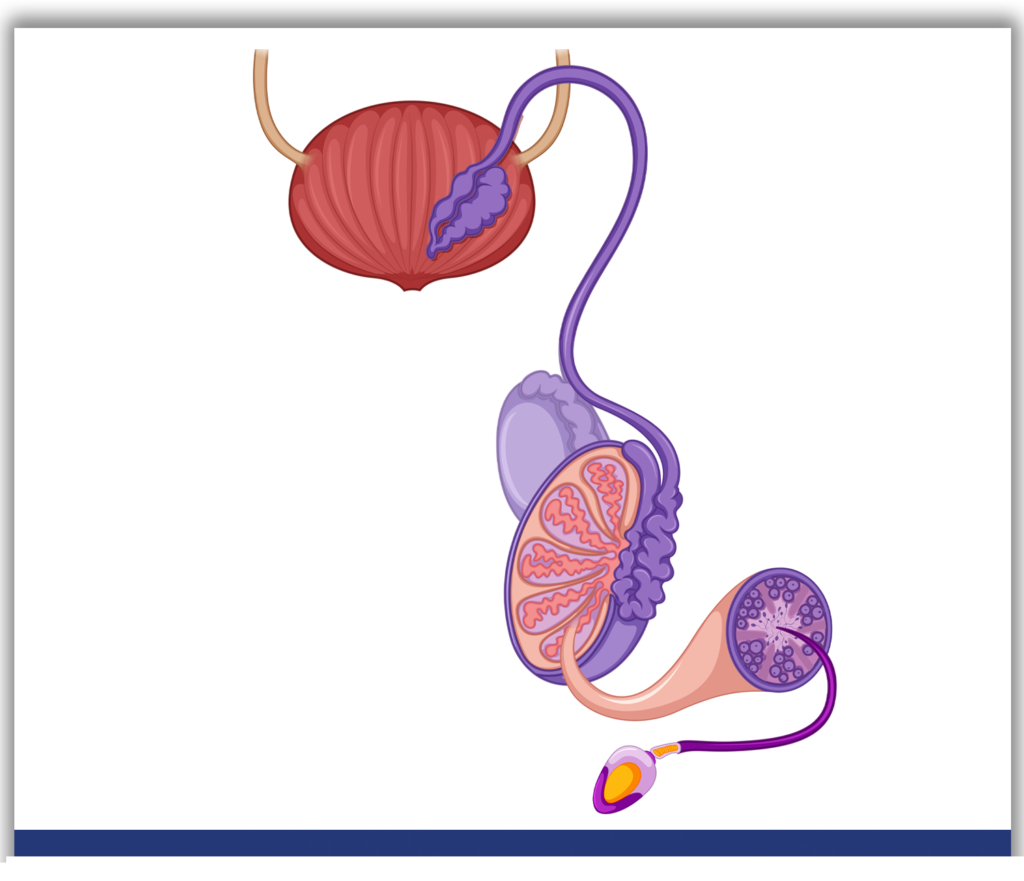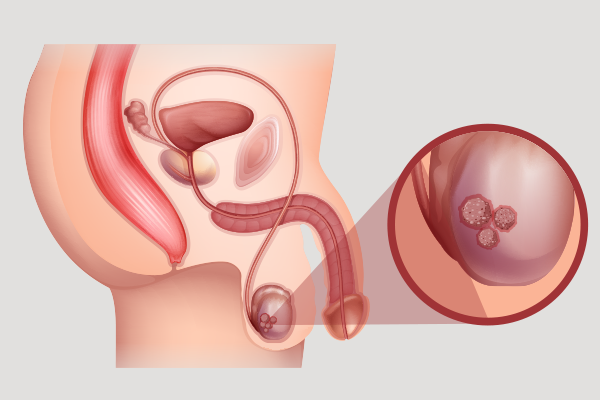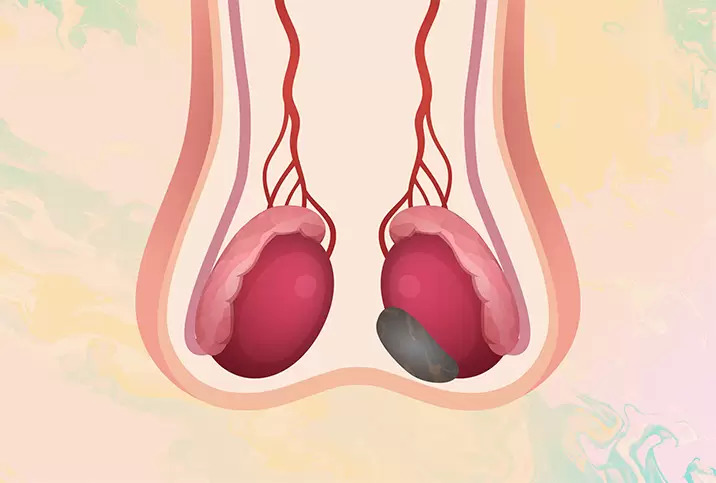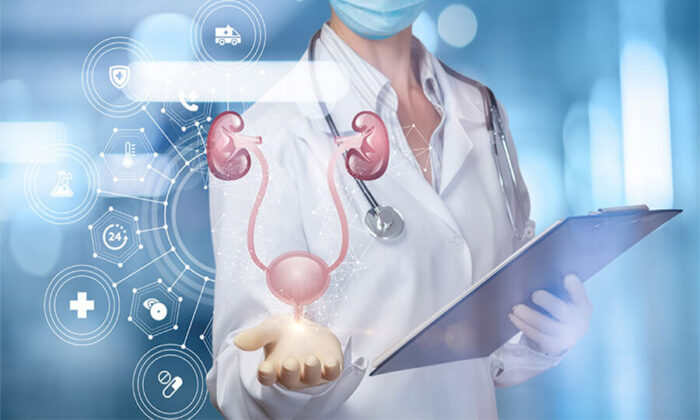
Testicular Cancer
Testicular cancer, a very rare sexual organ disease, is less common in children. testicular cancerIt originates from two ovarian organs located under the testicle. This type of cancer, seen in 3-4 people out of 100,000, can also occur with the HIV virus.
Testicular Cancer Disease also carries a risk with orchitis, that is, inflammation of the testicles. Although its incidence is low, the disease is one of the most common cancers in men between the ages of 20-34. Even when cancer has spread beyond the testicle, the disease is largely treatable. This situation Depending on the type and stage of cancer, you may receive one of different treatments.

What are the symptoms of testicular cancer?
Today, the most common symptom is a painless swelling or a sudden collection of fluid in the scrotum (the bag containing the testicles). The swelling is painless but firm. If the cancer has spread to the lymph nodes, there may be pain in the waist and groin. But the disease most often spreads to the lungs and causes chest pain, shortness of breath, etc. complaints may occur. Another symptom is the formation of lumps (swelling) in various parts of the body. testicular cancer Common signs and symptoms of the disease include:
- Lump or abnormal size enlargement in both testicles
- Feeling of heaviness in the scrotum
- fluid collection in the scrotum
- A dull ache in the abdomen or groin
- Testicular pain or scrotum pain
- Breast enlargement or tenderness
- Back pain
Causes of Testicular Cancer
Although the exact cause of the disease is unknown, some factors are associated with cancer. Risk factors for the disease include:
- Age
- genetic factors
- Undescended testicle (Cryptorchidism)
- abnormal development of the testicle
- Testicular inflammation (Orchitis)
- HIV infection
- Infertility

What are the Types of Testicular Cancer?
Hastalık, genel olarak hücre yapısı ve tipine göre sınıflandırılır. Neredeyse tüm testis kanserlerinin temelinin germ hücresi olduğu söylenebilir. Germ hücresi, tüm testis kanser vakalarının yaklaşık %95’inin kökenini oluşturmaktadır. Bu hücrelerin görevi sperm üretmek olmakla birlikte, aynı zamanda cenin içinde organ ve dokuların gelişmesinde de görevleri vardır. Germ hücresinin iki farklı alt türü bulunmaktadır;
seminoma
Although it can be seen in men of all ages, this type is generally more common in older men. testicular cancer It accounts for approximately half of the cases. The seminoma type, which is not a very aggressive type, responds better to radiation therapy. For this reason, the treatment is more likely to be successful in these cases.
nonseminoma
Nonseminoma, also known as non-seminoma, is a type that is generally seen in young men between the ages of 15-30. Cancer cells that develop and spread very quickly are divided into different types. Embryonal carcinoma, yolk sac carcinoma, choriocarcinoma and teratoma are types of non-seminoma cancer. These subspecies generally consist of a mixture of two different species.

What are the Stages of Testicular Cancer?
Stage 0: Stage 0 arises from germ cells. It is also called carcinoma in situ. At this stage, cancerous cells have not yet spread to the tissues. In this stage, when patients generally do not have any symptoms, there is no palpable mass. At this stage, cancer usually occurs incidentally and a definitive diagnosis is made through methods such as biopsy.
It should also be noted that stage 0 will not turn into cancer in all cases. For this reason, the doctor who makes the diagnosis may choose to observe for a certain period of time before making the treatment plan.
Stage I: Cancerous cells are seen only in the testicle at this stage. If it is diagnosed at an early stage, before it has spread to another tissue or organ, treatment can be provided by removing the tumor. If the testicle is completely removed by surgical methods, prosthesis application may be used.
Stage II: In this stage, cancerous cells may spread to the lower abdominal area. The tumor that spreads to the lymph nodes in the abdomen can be removed surgically at this stage, as in the first stage. In this case, it should not be forgotten that infertility may occur in some patients.
Stage III: In this advanced and final stage of testicular cancer, cells have metastasized. Cancerous cells have spread to the surrounding tissues and organs as well as the lymph nodes. Although metastasis is most common in the lungs, it can also be seen in the liver and rarely in the brain. We can say that the treatment of cancer diagnosed at this stage will be quite difficult.
Testicular Cancer Survival
Hastalığın tedavisinde dünya genelinde %90’ın üzerinde başarılı tedaviler uygulanmaktadır. Bu sebeple hastalığın yaşam süresi diğer kanserlere kıyasla oldukça yüksektir. Genel olarak bir oran vermek gerekirse; tanı konmuş vakaların %5’inden daha az bir oranında hayat kaybı yaşanmaktadır.

Testicular Cancer Treatment
Treatment of the disease varies depending on the spread of cancerous cells, the area of spread, the type of cancer and the general health status of the patients. Especially if diagnosed at an early stage testicular cancer treatment It is surgery.
Testicular Surgery
Generally, inguinal orchiectomy surgery is performed to remove the testicles in cases diagnosed at an early stage. Particularly, the presence of cancerous cells only in the testicle and the fact that they do not spread to other tissues increases the likelihood of success in this surgery.
Operations in which only one testicle is removed do not cause any complications in patients. Although it is thought that infertility or erection problems may occur after the removal of a single testicle, such a situation is not the case. However, removing both testicles may cause infertility. Sperm freezing may be required before surgery.
In cases where cancerous cells have spread to the lymph nodes, the remaining lymph nodes after chemotherapy are surgically removed and treated. After this surgery, which is performed by making an incision in the abdomen, men do not have erection problems. In addition to surgical methods, patients can also receive radiotherapy and chemotherapy.
Healing Process and Sexual Life After Testicular Cancer Surgery
The most risky factor after surgery is bleeding. Compared to open surgery, there is no risk of bleeding after testicular cancer surgery with robotic surgery. It may take time for the patient's bowel movements to return after surgery. The patient is usually discharged on the 3rd day, depending on the general health condition.
Frequently Asked Questions
The most common symptom of testicular cancer is a painless swelling felt inside the testicle.
Testicular cancer is a very rare disease, but it is one of the most common organ cancers in men under the age of 35.
Factors such as race, age, ethnicity, genetics, hereditary factors, and undescended testicle are among the risk factors for testicular cancer.
In the treatment of testicular cancer detected at the first stage, the response rate of patients to treatment is very high.
Our treatments
- Prostate cancer
- Bladder Cancer
- Kidney Cancer
- Kidney stone
- Robotic Surgery
- HOLEP
- ThuLEP
- Prostate Biopsy
- hydrocele
- varicocele
- Testicular Cancer
- Urinary tract infection
- Urinary Incontinence in Women
- Urodynamics
- Vesicovaginal Fistula
- Laparoscopy Surgery
- Sacral Neuromodulation
- Laser Prostate Surgery
- Penile Prosthesis Implantation
- Prostate Hot Water Steam Treatment
- Penile Shock Wave Therapy – ESWT
- Male Infertility
- Drug Treatment for Sexual Dysfunction (Erectile Dysfunction)
